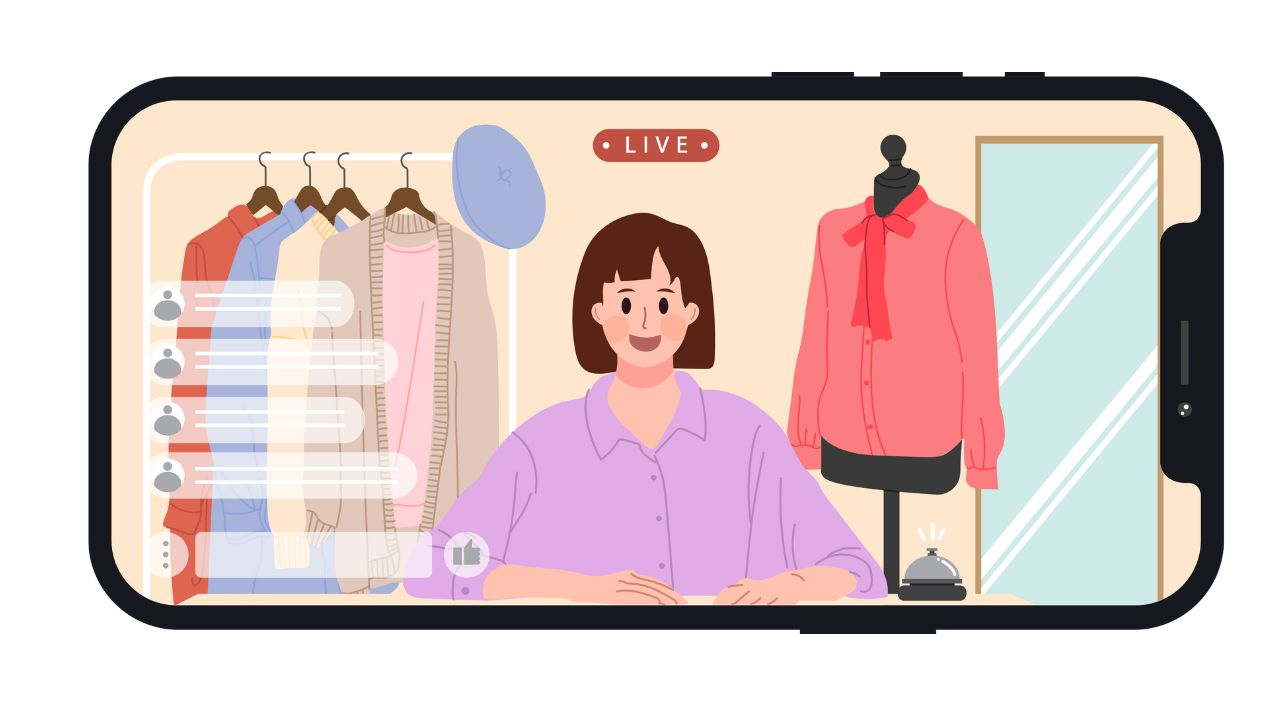Are you struggling to decide between Vimeo and YouTube for your business’s video content needs? The choice of the right platform can have a significant impact on the success of your video marketing strategy. In this blog post, we’ll provide a thorough comparison of Vimeo vs YouTube, examining key features, audience reach, monetization opportunities, customization, security, analytics, quality, live streaming, and integration capabilities. By the end of this comparison, you’ll have a clear understanding of which platform best suits your business’s needs.
Short Summary
- Vimeo and YouTube both offer distinct features for businesses looking to leverage video in their marketing efforts.
- Vimeo is a creative haven with niche community, while YouTube provides global reach and varied monetization opportunities.
- Both platforms provide high quality audio/video content, live streaming capabilities, security & privacy settings as well as integration options with other platforms.
Platform Overview

Vimeo and YouTube are two popular video sharing platforms that cater to different audiences and purposes. Vimeo is known for its high-quality content, creative community, and professional tools, while YouTube boasts a massive user base and diverse content library.
Each platform comes with its own set of features and advantages, making the decision between them an important one for businesses looking to leverage video in their marketing efforts. Let’s dive into the specifics of each platform to better understand their unique offerings.
Vimeo: A Creative Haven
Vimeo sets itself apart by focusing on high-quality content, fostering a creative community, and offering professional tools for video creators. This emphasis on quality attracts a niche audience of creative professionals who appreciate the platform’s dedication to delivering top-notch video and audio experiences.
Vimeo also goes beyond just hosting videos by providing valuable resources such as templates, stock footage, and access to a database of experienced video professionals to help creators elevate their content.
Vimeo is a great tool for businesses, as it offers different corporate use features. These features include varied levels of access to the video library, screen recording, video hosting platform virtual events and more. Additionally, Vimeo boasts robust video management features like privacy controls, social publishing, private links, cloud transcoding, video storage, and integration with third-party services like MailChimp.
With such a comprehensive set of features, Vimeo has positioned itself as a creative haven for businesses and individuals looking for a more refined, video creation platform.
YouTube: The Video Giant
In contrast to Vimeo’s creative niche, YouTube is a video giant with over 2 billion monthly active users, offering an extensive library of content that includes music, gaming, news, and educational videos. YouTube’s massive reach and diverse content make it the go-to platform for many businesses looking to tap into a wider audience.
Furthermore, YouTube is integrated with various social media outlets like Facebook, Twitter, and Instagram, making it easier for users to share and promote their content across multiple platforms.
The best part? YouTube is completely free for both individual and professional accounts, offering unlimited storage and a sophisticated recommendation algorithm that helps users discover new content. This makes YouTube an attractive option for businesses seeking to maximize their reach without incurring additional costs.
Overall, YouTube’s vast user base, diverse content, and social media integration make it a powerful platform for businesses looking to expand their video marketing efforts such a massive audience.
Audience Reach and Demographics

Understanding the size and demographics of the audiences on Vimeo and YouTube is crucial for businesses trying to determine which platform aligns best with their target market. While YouTube boasts over 2 billion monthly users, Vimeo has a more modest 240 million active monthly users, with a niche community of creative professionals.
In the following sections, we’ll delve deeper into the demographics and characteristics of each platform’s audience, providing valuable insights for businesses looking to make an informed decision.
Vimeo’s Niche Community
Vimeo’s smaller, focused audience of creative professionals sets it apart from YouTube’s more general user base. With the majority of its users aged between 20 and 35, Vimeo attracts a younger, more tech-savvy demographic. The platform is particularly popular in the US, UK, Canada, Germany, and France, making it a suitable choice for businesses targeting these regions.
Vimeo’s intimate and community-oriented nature is ideal for businesses seeking to access a creative niche or to be featured on their hand-selected staff picks page, where the best videos are showcased for increased visibility and engagement.
YouTube’s Global Appeal
On the other hand, YouTube’s global appeal is undeniable, with over 2 billion monthly active users spanning diverse demographics and interests. According to Statista, the majority of YouTube users are male, and the largest age demographics fall between 25 and 44 years old.
This diversity offers businesses a vast potential audience to tap into and is especially beneficial for those targeting a wider demographic range. Ultimately, both YouTube’s extensive reach and varied audience make it a powerful platform for businesses looking to maximize their video marketing efforts.
Monetization Opportunities

Another critical aspect to consider when choosing a video platform is the monetization opportunities it offers. Both Vimeo and YouTube provide different avenues for video creators to generate revenue from their content.
In the next sections, we’ll explore the monetization options available on each platform, providing valuable insights for businesses looking to capitalize on their video marketing efforts.
Vimeo’s Ad-Free Experience
One of the key distinctions between Vimeo and YouTube is the presence of ads. Vimeo is an ads-free platform, generating revenue through membership subscriptions rather than advertising. This offers a more refined viewing experience for users who prefer not to be disrupted by ads while enjoying videos.
However, it also means that content creators on Vimeo won’t be able to generate ad revenue from their videos as they would on a YouTube channel.
YouTube’s Advertising Options
In contrast, YouTube offers a variety of advertising opportunities for content creators to generate revenue. These include pre-roll, post-roll, and overlay ads, allowing businesses to run ads and monetize their content. Advertising on YouTube offers remarkable reach and visibility, precise targeting, and cost-efficiency, making it an attractive option for businesses looking to generate revenue from their videos.
However, it’s essential to keep in mind that the competitiveness of the platform might make it more challenging to stand out and generate substantial revenue through ads alone.
Customization and Branding

Customization options available on each platform can play a crucial role in enhancing a business’s brand image. In the following sections, we’ll examine the customization features offered by Vimeo and YouTube, providing insights into how businesses can leverage these features to create a more consistent and professional visual identity across their video content.
Vimeo’s Sleek Player
Vimeo’s embedded player offers a range of customization options, allowing businesses to create a more consistent and professional visual identity across their video content. With features such as customizing the video player look, altering the video thumbnail, uploading a custom logo, customizing the embed code, and adjusting the appearance of Vimeo videos to OTT site themes, businesses can tailor the appearance of their videos to match their brand image.
This level of customization can be particularly beneficial for businesses looking to establish a strong visual identity and stand out from the competition.
YouTube’s Limited Customization
In comparison, YouTube’s customization options are more limited than those offered by Vimeo. While YouTube allows content and other professional video creators, to add a custom logo, customize the video player, and customize the embed code, the platform’s focus on a more uniform user experience means that businesses have less control over the appearance of their videos.
This can make it more challenging for businesses to establish a strong visual identity and differentiate themselves from the competition on YouTube’s platform.
Security and Privacy Features

The security and privacy options available on online video platforms, are of utmost importance for businesses, as these features can help protect sensitive information and ensure that their content reaches the intended audience.
In this section, we’ll compare the security and privacy options available on Vimeo and YouTube, emphasizing their importance for business users.
Vimeo’s Advanced Privacy Options
Vimeo offers a range of advanced privacy options to help businesses protect their content and control access to it. Features such as password protection, share with followers, and hide from the community allow creators to restrict access to their videos, ensuring that only the intended audience can view them.
These advanced privacy options can be particularly beneficial for businesses that require pre-release video review or want to limit access to paying subscribers.
YouTube’s Basic Privacy Settings
While YouTube does offer some basic privacy settings, such as public, private, and unlisted video options, these features are more limited than those provided by Vimeo.
This means that businesses looking for more advanced privacy options and greater control over their content may find Vimeo’s platform more suitable for their needs.
Analytics and Performance Tracking

Analytics and performance tracking tools are essential for businesses looking to improve their video marketing efforts. Both Vimeo and YouTube offer analytics tools that provide valuable insights into video performance and viewer engagement.
In the following sections, we’ll evaluate the analytics tools provided by each platform, detailing how businesses can use this data to optimize their video marketing strategies.
Vimeo’s Basic Metrics
Vimeo offers a range of basic metrics to help businesses track the performance of their videos. These include view count, demographics, and engagement data, providing valuable insights into how viewers are interacting with the content.
By analyzing this data, businesses can make informed decisions about their content strategy and improve the effectiveness of their video marketing efforts.
YouTube’s In-Depth Analytics
YouTube, on the other hand, offers more extensive analytics options than Vimeo. In addition to similar metrics, YouTube provides more detailed traffic source data and demographic metrics such as gender and age.
This additional information can help businesses better understand their audience and how they’re engaging with the content. By leveraging these insights, businesses can optimize their content to better appeal to their target demographic and maximize the effectiveness of their video marketing efforts.
Video and Audio Quality

High-quality video and audio are essential for businesses looking to establish a professional image and attract more customers. In this section, we’ll compare Vimeo’s video quality and YouTube’s video and audio quality, highlighting the importance of high-quality content for businesses.
Vimeo and YouTube are two of the most popular video hosting platforms. Both offer high-quality video and audio, but there are some key differences between the two. Vimeo offers higher quality.
Vimeo’s Superior Quality
Vimeo is known for its superior video and audio quality, offering higher bitrate and sound quality options for paid plans. This focus on quality ensures that businesses can deliver top-notch video and audio experiences to their viewers, helping them stand out from the competition and establish a professional image.
Vimeo’s platform is ideal for businesses that prioritize high-quality content.
YouTube’s Quantity Over Quality
In contrast, YouTube’s focus on quantity means that video and audio quality can suffer due to compression for size optimization. While this allows for a vast library of content, it can result in a lack of clarity, color accuracy, and overall video and audio quality.
“YouTube videos may be a more suitable platform for businesses that prioritize quantity over quality. However, it’s essential to consider the potential impact of lower-quality content on brand image and customer perception.
Live Streaming Capabilities

Live streaming is a growing trend in video content, allowing businesses to engage with their audience in real-time and provide a more interactive experience. Both Vimeo and YouTube offer live streaming capabilities, but there are key differences between the two platforms that businesses should consider when choosing a platform for their live video content.
Let’s take a closer look at the live streaming features of each platform.
Vimeo’s Premium Live Streaming
Vimeo’s live streaming capabilities are available on their Premium and Enterprise plans, offering high-quality recorded versions and URL retention for live streams. This means that viewers can access the live stream even after it has ended, allowing them to watch it at a later time.
Vimeo’s premium live streaming features offer businesses an enhanced live streaming experience, ensuring that their content is accessible to a wider audience.
YouTube’s Free Live Streaming
YouTube, on the other hand, offers live streaming at no cost, making it an attractive option for businesses on a budget. YouTube’s free live streaming option is also highly popular among users, with millions of viewers engaging in live streams daily.
While YouTube’s live streaming features may not offer the same level of quality and control as Vimeo’s premium options, its popularity and accessibility make it a viable option for businesses looking to engage with a broad audience through live video content.
Integration with Other Platforms

Integration capabilities with other online platforms and tools can play a crucial role in a business’s video marketing strategy. In this section, we’ll examine the integration options available on Vimeo and YouTube, providing valuable insights for businesses looking to streamline their video marketing efforts and optimize their online presence.
Vimeo’s Business Integrations
Vimeo offers a range of integration options for Business users, allowing for seamless integration with other platforms and tools. These options include embedding videos on other websites, customizing embed settings, enhancing the the Vimeo video player with various URL parameters, and integrating with custom apps using Vimeo’s API.
Additionally, Vimeo enables customization of embed options such as autoplay/loop, colors, and embed sizing. This level of integration can help businesses streamline their video marketing efforts and optimize their online video presence across multiple platforms.
YouTube’s Limited Integration
In comparison, YouTube’s integration options are more limited than those offered by Vimeo. While YouTube does provide the ability to embed videos on websites, it lacks the extensive integration capabilities available on Vimeo, such as integration with other platforms like Slack and Salesforce.
For businesses that require more advanced integration options, Vimeo may be a more suitable choice.
Summary
In conclusion, both Vimeo and YouTube offer unique features and advantages that cater to different businesses and content creators. Vimeo’s focus on high-quality content, creative community, and professional tools make it an ideal choice for businesses looking to establish a strong visual identity and engage with a niche audience. On the other hand, YouTube’s extensive reach, diverse content, and free unlimited storage make it a powerful platform for businesses seeking to maximize their reach and tap into a wider demographic. Ultimately, the choice between Vimeo and YouTube will depend on your business’s specific needs, target audience, and video marketing goals. So, which platform will you choose to showcase your brand’s story?
Frequently Asked Questions
What is the disadvantage of Vimeo?
The primary disadvantage of Vimeo is that businesses must pay for a higher membership level if they plan to upload a lot of videos. Even with the free version, users are only allocated 500MB in uploads per week.
This can be a costly endeavor for those who need more storage or frequent uploads.
Why is Vimeo quality better than YouTube?
Vimeo’s video quality is superior to YouTube due to its higher bitrate, higher video resolution, support for the latest codecs, and fewer compression artifacts. Additionally, Vimeo offers a more exclusive and curated selection of content, making it an ideal choice for creators who want a more focused platform.
As a result, Vimeo is the better choice for those seeking the highest quality streaming experience.
Why do filmmakers use Vimeo instead of YouTube?
Filmmakers turn to Vimeo over YouTube due to its superior privacy capabilities, allowing videos to be viewed by only their desired audience. Additionally, unlike youtube, the technical features of Vimeo are more suitable for filmmakers and offer a greater variety of customizable settings. Thus, offering filmmakers an invaluable tool to ensure that their content is delivered in the most secure way possible.
Is Vimeo actually free?
No, Vimeo is not actually free. While there is a limited free membership option, it has certain restrictions in terms of storage and the number of videos you can upload.
If you want to use Vimeo for business or personal projects, you’ll need to upgrade to a paid plan.
Leave a Reply